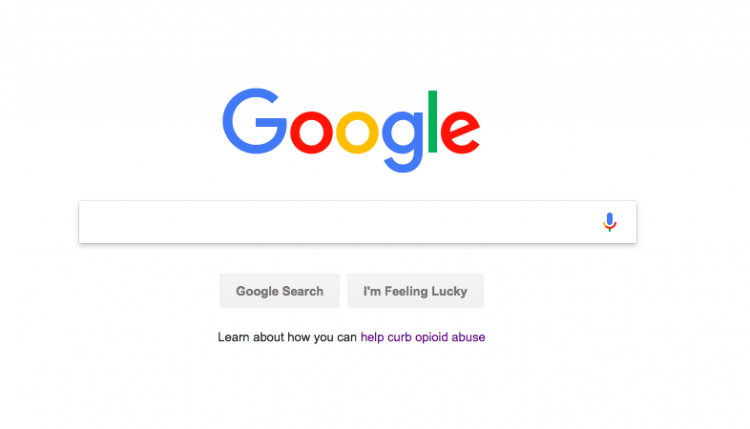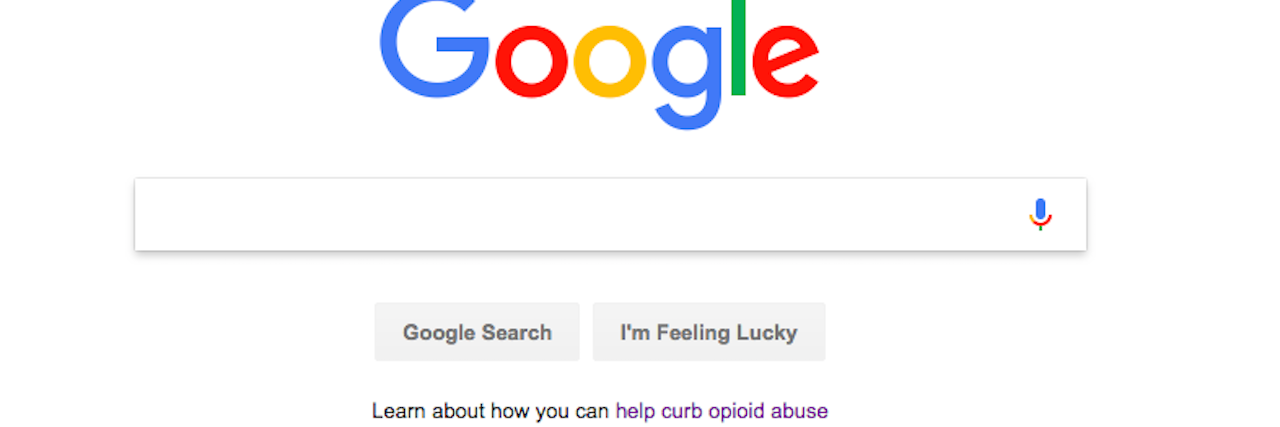If you visit the Google homepage today, you may notice something different. On Wednesday, the search giant added a line below the search buttons: “Learn about how you can help curb opioid abuse,” with the latter part of the sentence linked to a page titled, “Help fight the opioid epidemic this National Prescription Drug Take-Back Day.”

That page features an article by Susan Molinari, vice president of public policy for Google, explaining Google’s partnership with the U.S. Drug Enforcement Administration (DEA) to create a “locator tool” for National Prescription Drug Take-Back Day, Saturday, April 28. The tool features an interactive map that allows you to enter an address to find the nearest place you can safely dispose of unused prescription drugs (for example, churches, police stations, hospitals and city hall buildings).
“We’re deeply concerned by the opioid crisis that has impacted families in every corner of the United States. We started by thinking about how to bring Google’s technical expertise to help families combat the epidemic,” Molinari wrote.
Molinari added that Google is working with the Partnership for Drug-Free Kids, which provides parents free counseling about children’s substance abuse. Google plans to donate $750,000 in matching gifts and other grants to help expand the parent helpline.
Finally, Molinari wrote that they’re “committed to ensuring that the public understands the danger of opioid abuse and the resources available for those who need help.” Information about opioid addiction and prescription drugs will be available in Google Search.
Studies have found that less than 25 percent of people who start misusing prescription opioids obtained them from doctors. Most people obtain prescription opioids illegally from friends or relatives hence the popularity of take-back programs, which seek to prevent patients as well as their loved ones from misusing unused pills. However, the majority of people prescribed opioids do not misuse their own prescriptions. Studies have shown only approximately 13 percent of people using opioids “misuse” them, while between less than 1 and 12 percent become addicted.
There is limited research on the effectiveness of drug take-back programs. One 2016 study of take-back programs in Kentucky found that these events constituted a “minuscule proportion” of drugs dispensed, leading researchers to conclude that drug disposal efforts may have a minimal impact on reducing the availability of unused drugs. A 2012 survey of 148 take-back programs found “no evidence” the programs affect prescription drug abuse and that ongoing programs, rather than single events, may be more efficient.
People with chronic pain may have varying opinions on Google’s efforts. Take-back programs can be positive, but the campaign’s emphasis on only the dangers of opioids may raise fears about increasing the stigma against opioids.
Kate Nicholson, a Mighty contributor who used opioids for five years, told The Mighty she applauds all take-back efforts, including recent campaigns run by CVS, Walgreens and Walmart.
“For the life of me, I don’t understand why we have not had a public health campaign that teaches people about how properly to store prescription opioids while they are being used (in a locked place), about the dangers of sharing prescription opioids with friends and family members even with the best of intentions, and about proper disposal of unused medication,” Nicholson said.

